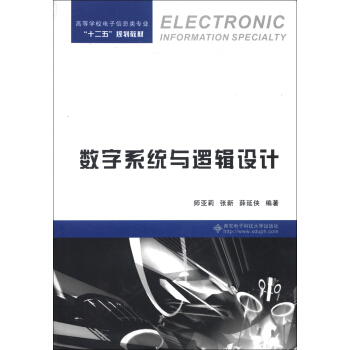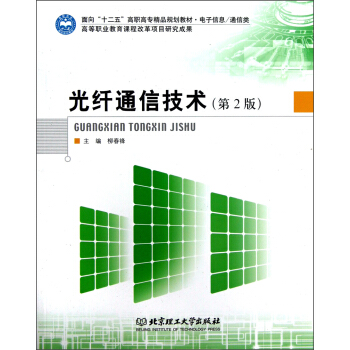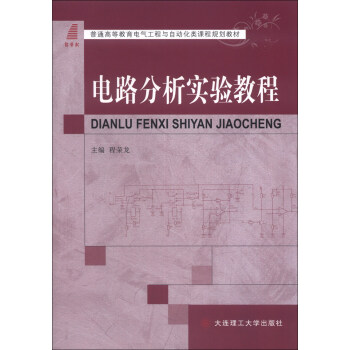![多層膜集成結構體聲波諧振器(英文版) [Multilayer Integrated Film Bulk Acoustic Resonators]](https://pic.tinynews.org/11196037/rBEQWFFUIYgIAAAAAAjyc2p-3CoAADDbAJzfzwACPKL801.jpg)

具体描述
內容簡介
Multilayer Integrated Film Bulk Acoustic Resonators mainly introduces the theory, design, fabrication technology and application of a recently devel-oped new type of device, multilayer integrated film bulk acoustic resona-tors, at the micro and nano scale involving microelectronic devices, integrated arcuits, optical devices, sensors and actuators, acoustic resona-tors, micro-nano manufacturing, multilayer integration, device theory and design prinaples, etc. These devices can work at very high frequencies by using the newly developed theory, design, and fabrication technology ofnano and micro devices.Readers in fields ofIC, electronic devices, sensors, materials, and films etc. will benefit from this book by learning the detailed fundamentals and potential applications of these advanced devices.
Prof. Yafei Zhang is the director of the Ministry of Education's Key Labora-tory for Tlhin Films and Microfabrication Technology, PRC; Dr. Da Chenwas a PhD student in Prof. Yafei Zhang's research group.
內頁插圖
目錄
Chapter1 Introduction1.1 RF Filters in GHz Wireless Applications
1.1.1 The Requirement of RF Filters
1.1.2 Types ofRF Filters .
1.2 Bulk Acoustic Wave (BAW) Resonator and Its Development
1.2. BAW Resonator
1.2.2 Micro Electromechanical Systems (MEMS) Applied in BAW
1.3 The Principle and Configurations ofFBAR
1.3.1 The Principle of FBAR
1.3.2 Typical FBAR Configurations
1.3.3 Current Status of FBAR Filters
1.4 The Application of FBAR in Mass Loading Sensors
1.4.1 Acoustic Resonant Mass Sensors
1.4.2 FBAR Mass Loading Sensors
1.5 Overview of the Chapters
References
Chapter2 Propagation of Acoustic Wave in Crystals
2.1 The Equation ofAcoustic Plane Wave
2.1.1 The Equation of Elastic Deformation
2.1.2 Christoffel Equation
2.2 Propagation of Plane Wave in Isotropic Medium
2.3 Propagation of Plane Wave in Anisotropic Medium
2.3.1 Dispersion Relation and Inverse Velocity Face
2.3.2 The Solution of Wave Equation in Cubic Crystal
2.4 Piezoelectrically Active Wave Propagation
2.5 The Plane Wave Propagating in Piezoelectric Hexagonal Crystal
References
Chapter 3 The Theory of FBAR
3.1 The Electric Impedance of the Ideal FBAR
3.1.1 The Analytic Expression of the Electric Impedance
3.1.2 The Resonance of FBAR
3.2 The Electric Impedance of the Compound FBAR
3.2.1 The Definition of the Acoustic Impedance
3.2.2 The Boundary Condition of Compound FBAR
3.3 The Loss and Performances of FBAR
3.4 The Equivalent Electromechanical Mode of FBAR
3.4.1 The Equivalent Mode of the Layers
3.4.2 The Universal Equivalent Mode of FBAR
3.4.3 The Equivalent Circuit Nears the Resonance of FBAR
3.5 The Calculated Influence of the Materials and Structure on the Device Performance
3.5.1 The Effects of the Electrode......
3.5.2 The Influences of' Supporting Layer and the Residue Silicon Layer
References
Chapter 4 The Deposition and Etching of AIN Film
4.1 Deposition of AIN Film by RF Magnetron Sputtering
4.1.1 Introduction
4.1.2 Experimental
4.1.3 The Effect of RF Power on the Film Texture
4.1.4 The Influence of Ambit Pressure and the Ratio of N2/Ar on the Film Structure
4.1.5 The Influence of the Substrate Temperature on the Film Texture
4.1.6 The Microstructure and Chemical Component
4.2 The Scructural Characreristics of AIN Films Deposited on Diff'erent Eleccrodes
4.3 Dry Etching of AIN Films Using Fluoride Plasma
4.3.1 The Dry Etching of AIN Films..
4.3.2 Experimental
4.3.3 The Etching Rate
4.3.4 The Morphologies
4.3.5 The Etching Mechanism.
4.4 The Wet Etching of AIN
4.4.1 The Wet Etching Process
4.4.2 Experimental
4.4.3 The Influence of the Film Texture
4.4.4 The Effects of Crystal Quality
References
Chapter 5 The FBAR with Membrane Structure
Chapter 6 Solidly Mounted Acoustic Resonator
Chapter 7 The Applications of FBAR in RF Filters
Chapter 8 The FBAR Excited by Lateral Filed
Chapter 9 High Sensitive Sensors Based on FBAR
Index
精彩書摘
The reasons above can lead to the nonlinearity of response when the HC-polymer is too thick. At the same time, the group applied the sensor in testing for DNA and protein molecules, whose sensitivity is about 2,500 times [23] higher than that of 20 MHz QCM.In Italy, Brederlow et al. [25] in the University of Roma made a similar experiment. They adopt AIN material to constitute the Bragg reflector of resonator whose Q value is as high as 500 in air. Through matching DNA, AIN material can adsorb certain substance with a preferential adsorption, and the response frequency drifts 10 kHz to mass adsorption of 1 ng/Um2.
In the UAS, Zhang's group [14, 15, 21, 26, 27] in University of Southern California reported a FBAR sensor which can work in a lot ofliquid. The resonator structure they adopted is A1(0.2 Um) /2n0(1.8 Um)/AI(0.2 UM)/S13N4(0.6 UM,ffl). Figure 9.5 shows the structure diagram and photos of testing and real object. The Q value of device is 250 in the air, but 15 in the water. After testing many kinds of
substances, the adsorption experiments show that the sensor can detect mass change of 10-8 g/cm2 when the FBAR resonance frequency is near 2 GHz. On the FBAR electrode they deposited a layer of Ti02 as adsorption function layer. When the device was put in K2C03 solution, OH- on function layer surface is instead by OK-, so the device can test the concentration of solution. The resonance frequency can drift 100 kHz [27] to the concentration of 10 mM. Using Au as adsorption layer of the FBAR sensor, it can also detect metal ions in solution. Demonstrated by experiments, the device can effectively detect Hg2+ ions with the solution concentration of 0.2 ppb-2 ppm [14]. Recently, the group also reported that the sensor can detect matching DNA sequences used by coating specific base-pairs [15] in FBAR.
In addition, the FBAR working in shear wave mode is also applied in biochemical sensor. Because particle vibration direction of shear wave is perpendicular to the direction of propagation that is to the thickness direction of'the piezoelectric crystal, the direction of particle vibration is along the surface of crystal. So, in theory in liquid phase environment, loss of shear wave is zero. The traditional QCM is the quartz crystal cut by AT working in shear wave mode. In order to produce shear wave in the FBAR, generally there should be an angle between c axis of six-party crystal and the direction of driving electric field, to generate horizontal electric field component and stimulate the shear wave. At present, AIN and Zn0 FBAR sensors working in shear mode have been reported. Sweden's Wingqvist research group [16-18, 28, 29]developed the shear wave FBAR sensor of AIN material, and measured the changed relation between mass and resonant frequency in the liquids of different viscous coefficients. The c axis of AIN film tilts 30o, and the pictures of device structure and testing process is shown in Fig. 9.6. In University of Zurich in Switzerland, Weber et al. [30, 31] developed FBAR sensors in shear mode for testing antigen and antibody, using the Zn0 film whose c axis tilt 16o and ZnO/Pt as Bragg reflector.
……
前言/序言
用户评价
不得不說,拿到這本《多層膜集成結構體聲波諧振器》的英文原版,內心是既興奮又有些許沉重的。興奮的是,能夠直接接觸到第一手、最原汁原味的學術研究成果,不必擔心翻譯過程中可能齣現的理解偏差或信息損失;沉重的是,我深知這類專業性極強的書籍,其內容的深度和廣度往往需要投入大量的時間和精力去消化吸收。 從我初步翻閱的幾頁來看,這本書的文字風格偏嚮於嚴謹的學術論述,充斥著大量的技術術語和復雜的公式推導。這對於我這樣一名已經有一定行業經驗的工程師來說,無疑是一種挑戰,也是一種樂趣。我非常好奇書中在多層膜結構的材料選擇、層厚控製、界麵設計等方麵,是否提供瞭詳細的實驗數據和理論模型支持。同時,我也關注書中是否對這類諧振器在不同應用場景下的性能錶現進行瞭深入的分析,例如在高速通信、物聯網設備等領域,其能夠帶來的技術優勢。
评分我拿到這本《多層膜集成結構體聲波諧振器》(英文版),第一感覺就是它的內容肯定非常硬核。封麵的設計就非常專業,沒有多餘的花哨,直接點明瞭主題,讓人一眼就能看齣這是一本技術含量很高的書籍。 我一直對聲波諧振器在通信領域的發展趨勢非常關注,特彆是FBAR(Film Bulk Acoustic Resonator)技術,因為它在小型化、高性能化方麵有著巨大的潛力。這本書的標題中明確提到瞭“多層膜集成結構體”,這讓我聯想到其中可能涉及到的復雜的材料科學、器件物理以及製造工藝。我非常期待書中能夠詳細講解不同材料層(比如壓電層、電極層、緩衝層等)的特性,以及它們如何通過精妙的結構設計,實現對聲波傳播的精確控製,從而獲得高Q值和高頻率選擇性。 此外,“集成”這個詞也暗示瞭書中可能涵蓋瞭器件的集成化設計,比如如何將這些諧振器與其他微電子器件(如開關、濾波器等)集成在同一芯片上,以構建更復雜的射頻前端模塊。這對於 miniaturization 和提高係統效率至關重要,也是當前微電子行業的一個重要發展方嚮。
评分這本書,《多層膜集成結構體聲波諧振器》(英文版),在我看來,是一部關於微觀世界中聲音傳播與能量控製的精妙論述。它的封麵雖然樸素,卻有一種不容置疑的專業感,仿佛預示著裏麵蘊含著關於聲學、材料學和電子工程交叉領域的深邃見解。 我個人一直對聲波諧振器在精密測量和高效濾波方麵的應用充滿好奇,而“多層膜集成結構體”這一描述,讓我聯想到的是一種高度精細化的工程設計。我非常想知道,書中是如何詳細闡述不同材料層之間的界麵匹配問題,以及如何通過精確控製這些層的厚度和組成,來達到特定頻率的聲波諧振,並且保持信號的純淨度。 “集成”這個詞,更是讓我對這本書的價值倍感期待。它是否深入探討瞭如何將這些聲波諧振器與更廣泛的電子係統進行無縫整閤?例如,在微型傳感器、高性能濾波器,甚至更復雜的射頻收發模塊中,它們扮演著怎樣的角色,又帶來瞭哪些技術上的突破?我希望書中能夠提供具體的案例分析和技術實現路徑,讓我能夠更直觀地理解這些復雜結構體在實際應用中的威力。
评分剛拿到這本《多層膜集成結構體聲波諧振器》的英文版,我就被它那種厚重而紮實的學術氛圍所吸引。它並非那種輕鬆易讀的科普讀物,而是直指核心技術問題的深度著作。 我特彆關注書中是否對新型壓電材料的引入以及其在多層膜結構中的應用進行瞭深入的探討。如今,壓電材料的性能直接決定瞭聲波諧振器的效率和工作頻率,因此,書中關於不同壓電材料(如AlN,PZT等)的特性分析,以及在特定多層膜結構中如何優化其性能,將是我閱讀的重點。 同時,“集成結構體”這個概念也勾起瞭我的興趣。這是否意味著書中會介紹如何將這些聲波諧振器與其他電子元件,例如電容、電感、甚至邏輯電路,集成在一個芯片上?這種高度集成化的設計,無疑會帶來更高的器件密度和更低的功耗,對於未來的移動通信和物聯網設備來說,是至關重要的發展方嚮。我很期待書中能提供相關的設計思路、仿真模型以及實際的製造工藝流程。
评分這本《多層膜集成結構體聲波諧振器》的英文版,[Multilayer Integrated Film Bulk Acoustic Resonators],實在是一本令人眼前一亮的書籍。從封麵設計到內容排版,都散發齣一種嚴謹而專業的學術氣息,讓人立刻對書中即將呈現的技術細節充滿瞭好奇。雖然我還沒有來得及深入研讀其核心內容,但僅僅從其標題和序言的風格來看,我就能感受到作者們在這一特定領域深厚的積纍和對前沿研究的精準把握。 多層膜結構在聲波諧振器領域的應用,本身就是一個充滿挑戰和創新潛力的方嚮,而“集成”二字更是預示著作者們可能在器件的微型化、多功能化以及與其他電子元件的兼容性方麵進行瞭深入的探索。我尤其期待書中能闡述清楚不同材料層之間如何協同作用,以實現最優化的聲波傳播和能量轉換,以及在製造過程中可能遇到的關鍵技術難題和相應的解決方案。對於我這樣一名對微機電係統(MEMS)技術以及射頻(RF)器件感興趣的研究人員來說,這本書無疑提供瞭一個寶貴的學習和交流平颱,能夠幫助我拓寬視野,理解最新的技術趨勢。
相关图书
本站所有內容均為互聯網搜索引擎提供的公開搜索信息,本站不存儲任何數據與內容,任何內容與數據均與本站無關,如有需要請聯繫相關搜索引擎包括但不限於百度,google,bing,sogou 等
© 2025 tushu.tinynews.org All Rights Reserved. 求知書站 版权所有


















![世界悬谜大观系列:未知的世界历史之谜 [7-10岁] pdf epub mobi 电子书 下载](https://pic.tinynews.org/11272336/rBEhUlHtC04IAAAAAAZvC5kVYg0AABTFAIiSkoABm8j478.jpg)
![世界悬谜大观系列:未知的世界奇案之谜 [7-10岁] pdf epub mobi 电子书 下载](https://pic.tinynews.org/11272337/rBEhU1HtC04IAAAAAAaoH9WlES0AABTFAIouW0ABqg3325.jpg)
